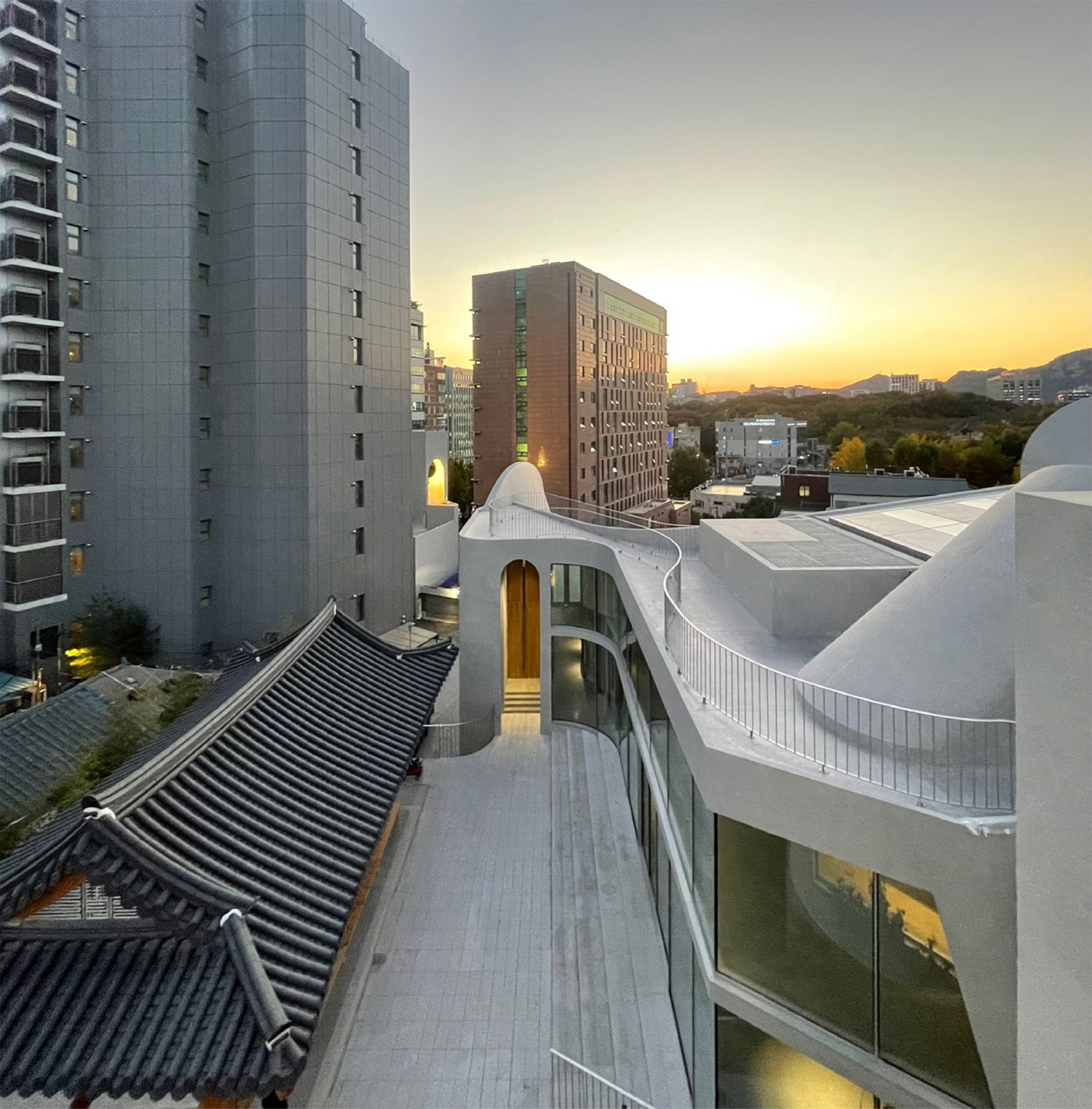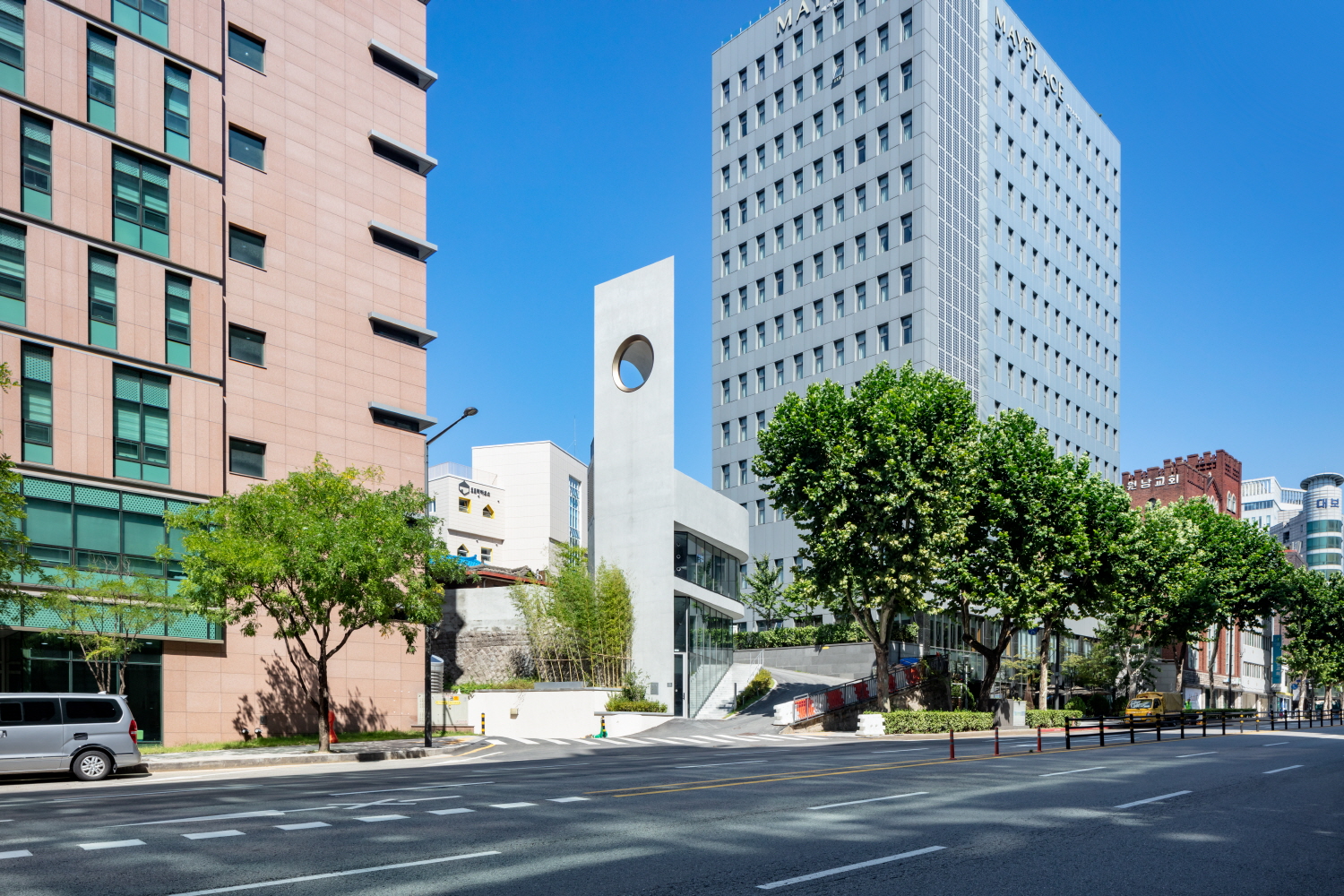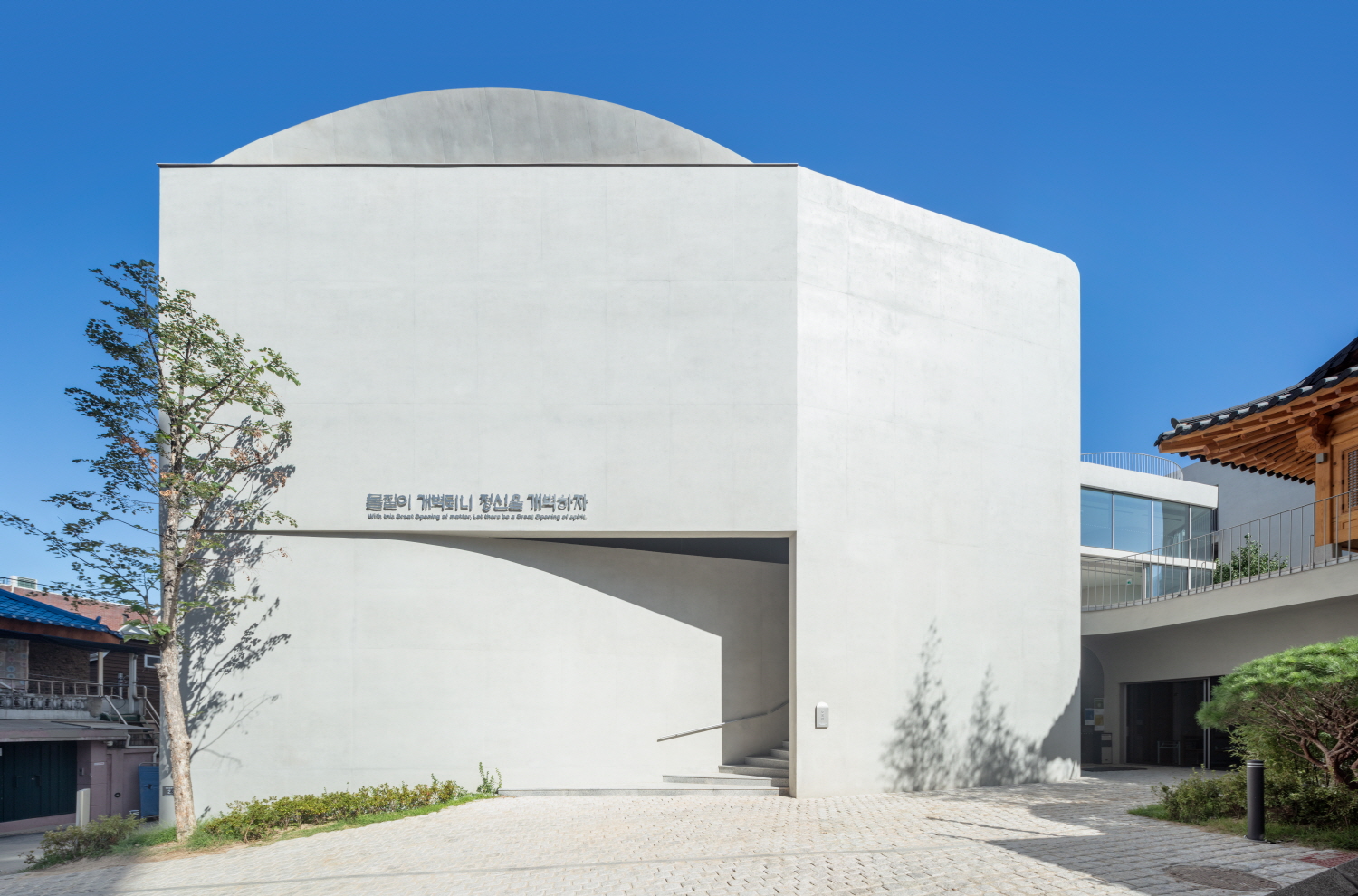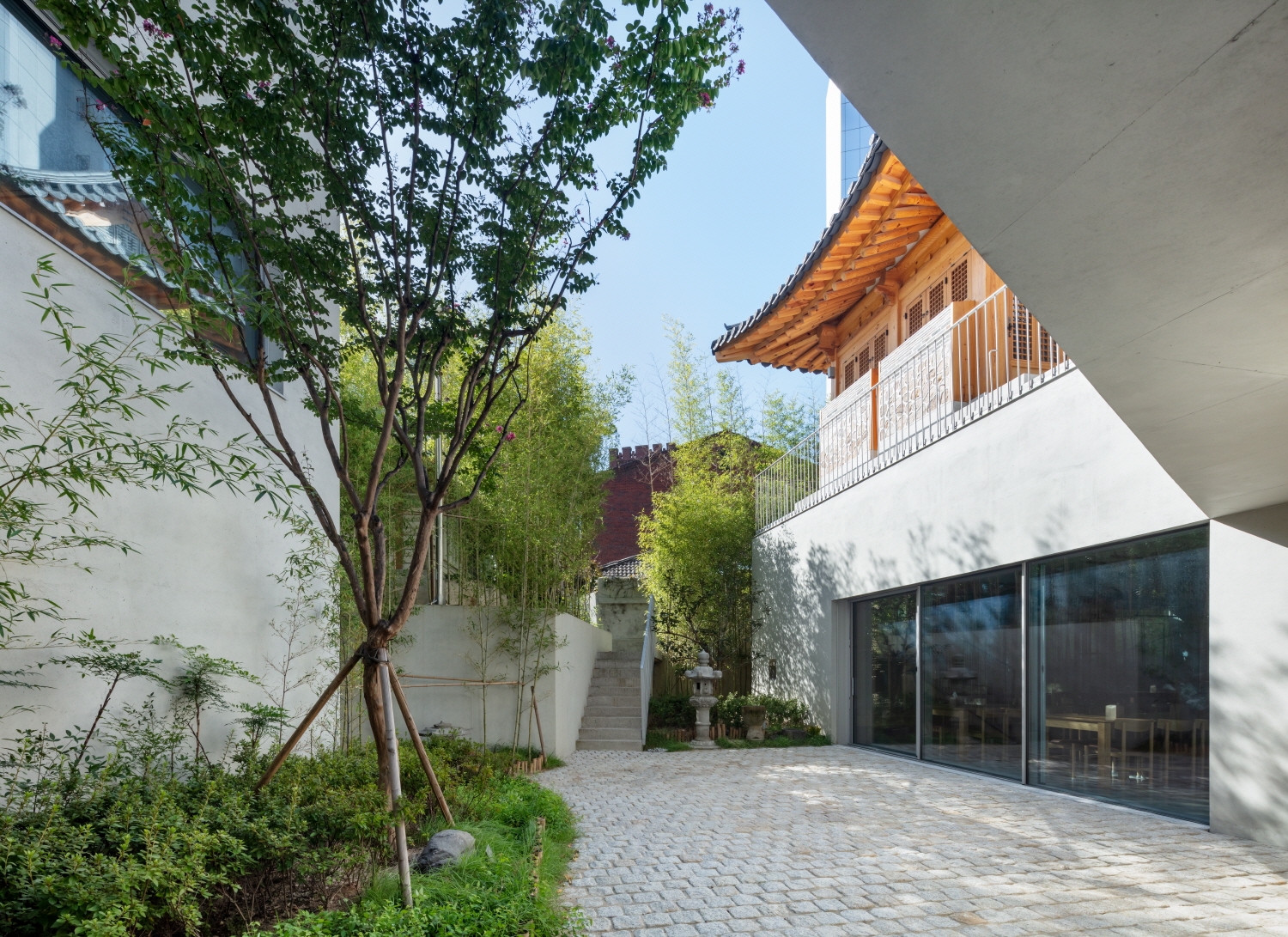SPACE March 2024 (No. 676)

Won Buddhism Wonnam Temple (2022) ⓒMASS STUDIES
If one of the main roles of the architectural pavilion is to encapsulate conceptual frameworks, Cho Minsuk’s design for the Serpentine Gallery Pavilion (hereinafter Serpentine Pavilion), ‘Archipelagic Void’ (2024) is an important lens through which to understand his recent work. The pavilion’s unique non-object status has been achieved through two interrelated devices which I am calling the ‘archipelagic approach’ and the ‘void inflection’. Related to the way we experience MASS STUDIES’s projects as the gradual unfolding of relationships, we can trace these concepts across two seemingly unrelated projects: Won Buddhism Wonnam Temple (2022, hereinafter Wonnam Temple) and the Osolluc Farm Tea Factory (2023).

The Annex of Won Buddhism Wonnam Temple

The main entrance to Main Dharma Building of Won Buddhism Wonnam Temple

The sunken garden conneted to alleyway of Won Buddhism Wonnam Temple
You can see more information on the SPACE No. March (2024).

John Hong
John Hong (AIA, LEED AP) is an architect and professor at Seoul National University and the director of Project : Architecture. His work bridges the scales of architecture and urbanism and merges the mediums of drawing, materials research, theory, and computation. He was associate professor in practice at the Harvard University Graduate School of Design and has held visiting professorships at other major universities including the University of Pennsylvania.
1




